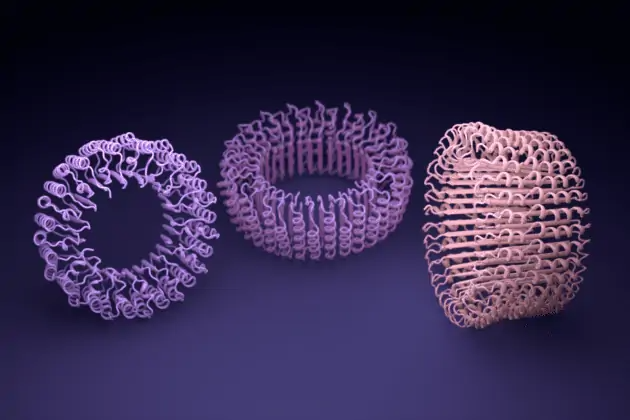AI has taken humans a step further in biotechnology with the invention of a brand new protein!
- Tram Ho
The recent renaissance of the field of artificial intelligence after the collapse of the 1980s – the “AI winter” – has proven to be completely revolutionary. Recently, DeepMind, a subsidiary of Google tasked with developing advanced AI programs, revealed that its AlphaFold system has decoded the structure of virtually all the proteins known to science. – more than 200 million of them.
And now, a new AI tool is pushing the boundaries of what is possible one step further by allowing scientists to design proteins that are original and unlike anything else. found in nature. This new tool, called ProteinMPNN, was recently described by researchers at the University of Washington in a pair of studies published in the journal Science.
Its authors are confident that ProteinMPNN and other similar tools bound to the surface in the near future will open up an area of new possibilities and further applications. These include entirely new proteins designed from the ground up to meet certain targets, be it plastic-digesting enzymes or new drugs that target some of today’s most incurable and incurable diseases. .

Protein is essential for cell survival. It performs complex tasks and is a catalyst for chemical reactions. Many scientists have long sought to harness this power by designing artificial proteins that could perform new functions such as treating disease, capturing carbon or accumulating energy. However, many of the processes that make such proteins are slow because of their complexity and high failure rate. Previous studies have produced methods that can shape the protein structure, but its function has been elusive.
The role of protein in supporting life and nature in general is of immense significance. Some are structures, others transport molecules, others are still receptors, etc. Each of these functions is closely related to its specific conformation.
All proteins start out as a linear chain of basic units called amino acids. This amino acid’s primary 2D structure contains the “recipe” that the protein uses to fold itself. A protein will undergo repeated stages of folding, applying a series of configurations before reaching its final conformation, which is the most energetically beneficial configuration.
While AlphaFold can predict the shape of existing proteins, thereby inferring their function, ProteinMPNN can solve the same problem but in reverse. Instead of reverse engineering the role of proteins from nature, the new tool could help scientists design entirely new proteins from scratch. For example, they could design a certain function or purpose for a protein, and then have the AI come up with a corresponding structure whose molecular composition and shape are conducive to the desired function. Then, it remains to synthesize these proteins in the laboratory.
ProteinMPNN was able to achieve all of these truly remarkable things using two powerful AIs developed at the University of Washington. The first tool, dubbed “hallucination,” allows scientists to search among potentially useful protein sequences based on simple prompts – much like the now famous DALL-E AI generator. Now help create amazing images from a text prompt.
The second AI, called “inpainting,” can be thought of as an autocomplete feature like the kind you see when typing a question into Google — just for protein. When used in synergy, these two AIs could allow scientists to discover entirely new proteins that match the desired function.

By developing machine learning models capable of looking at protein information culled from genomic databases, researchers have found relatively simple protein design rules that can generate new synthetic proteins. When they built these proteins in the physics lab, they found that they performed so well chemically that they could compete with those found in nature.
To validate the different protein shapes produced by the two AIs, the researchers transferred the data to AlphaFold and tested it to see if the amino acid sequences were indeed capable of folding into the desired shape. are not.
The proteins were initially engineered using ProteinMPNN and then assembled in the laboratory. Among them are structures that are only microscopic in size, which can be inserted inside custom nanodevices.
“This is the beginning of machine learning in protein design. In the coming months, we will work to improve these tools to make proteins even more dynamic and functional,” said senior author David Baker, professor of biochemistry at the University of Washington School of Medicine. .
References: ZME; GitHub; Inverse
Source : Genk
